You're using an outdated browser. Please upgrade to a modern browser for the best experience.

Submitted Successfully!
Thank you for your contribution! You can also upload a video entry or images related to this topic.
For video creation, please contact our Academic Video Service.
| Version | Summary | Created by | Modification | Content Size | Created at | Operation |
|---|---|---|---|---|---|---|
| 1 | Giovanni Pau | + 3464 word(s) | 3464 | 2021-12-29 07:59:30 | | | |
| 2 | Catherine Yang | -17 word(s) | 3447 | 2022-02-16 05:05:07 | | |
Video Upload Options
We provide professional Academic Video Service to translate complex research into visually appealing presentations. Would you like to try it?
Cite
If you have any further questions, please contact Encyclopedia Editorial Office.
Pau, G. 5G Technology. Encyclopedia. Available online: https://encyclopedia.pub/entry/19470 (accessed on 20 December 2025).
Pau G. 5G Technology. Encyclopedia. Available at: https://encyclopedia.pub/entry/19470. Accessed December 20, 2025.
Pau, Giovanni. "5G Technology" Encyclopedia, https://encyclopedia.pub/entry/19470 (accessed December 20, 2025).
Pau, G. (2022, February 15). 5G Technology. In Encyclopedia. https://encyclopedia.pub/entry/19470
Pau, Giovanni. "5G Technology." Encyclopedia. Web. 15 February, 2022.
Copy Citation
In wireless communication, Fifth Generation (5G) Technology is a recent generation of mobile networks. Among all the previously existing mobile networks, 5G provides a high-speed internet facility, anytime, anywhere, for everyone. 5G is slightly different due to its novel features such as interconnecting people, controlling devices, objects, and machines. 5G mobile system will bring diverse levels of performance and capability, which will serve as new user experiences and connect new enterprises.
5G
millimeter wave (mmW)
1. 5G Massive MIMO
Multiple-input-multiple-out (MIMO) is a very important technology for wireless systems. It is used for sending and receiving multiple signals simultaneously over the same radio channel. MIMO plays a very big role in WI-FI, 3G, 4G, and 4G LTE-A networks. MIMO is mainly used to achieve high spectral efficiency and energy efficiency but it was not up to the mark MIMO provides low throughput and very low reliable connectivity. To resolve this, lots of MIMO technology like single user MIMO (SU-MIMO), multiuser MIMO (MU-MIMO) and network MIMO were used. However, these new MIMO also did not still fulfill the demand of end users. Massive MIMO is an advancement of MIMO technology used in the 5G network in which hundreds and thousands of antennas are attached with base stations to increase throughput and spectral efficiency. Multiple transmit and receive antennas are used in massive MIMO to increase the transmission rate and spectral efficiency. When multiple UEs generate downlink traffic simultaneously, massive MIMO gains higher capacity. Massive MIMO uses extra antennas to move energy into smaller regions of space to increase spectral efficiency and throughput [1]. In traditional systems data collection from smart sensors is a complex task as it increases latency, reduced data rate and reduced reliability. While massive MIMO with beamforming and huge multiplexing techniques can sense data from different sensors with low latency, high data rate and higher reliability. Massive MIMO will help in transmitting the data in real-time collected from different sensors to central monitoring locations for smart sensor applications like self-driving cars, healthcare centers, smart grids, smart cities, smart highways, smart homes, and smart enterprises [2].
Highlights of 5G Massive MIMO technology are as follows:
-
Data rate: Massive MIMO is advised as the one of the dominant technologies to provide wireless high speed and high data rate in the gigabits per seconds.
-
The relationship between wave frequency and antenna size: Both are inversely proportional to each other. It means lower frequency signals need a bigger antenna and vise versa.
-
Number of user: From 1G to 4G technology one cell consists of 10 antennas. But, in 5G technologies one cell consist of more than 100 antennas. Hence, one small cell at the same time can handle multiple users [3]. As shown in Figure 1.
-
MIMO role in 5G: Massive MIMO will play a crucial role in the deployment of future 5G mobile communication as greater spectral and energy efficiency could be enabled.
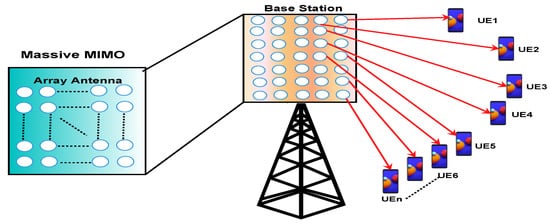
Figure 1. Pictorial representation of multi-input and multi-output (MIMO).
State-of-the-Art Approaches
Plenty of approaches were proposed to resolve the issues of conventional MIMO [4].
The MIMO multirate, feed-forward controller is suggested by Mae et al. [5]. In the simulation, the proposed model generates the smooth control input, unlike the conventional MIMO, which generates oscillated control inputs. It also outperformed concerning the error rate. However, a combination of multirate and single rate can be used for better results.
The performance of stand-alone MIMO, distributed MIMO with and without corporation MIMO, was investigated by Panzner et al. [6]. In addition, an idea about the integration of large scale in the 5G technology was also presented. In the experimental analysis, different MIMO configurations are considered. The variation in the ratio of overall transmit antennas to spatial is deemed step-wise from equality to ten.
The simulation of massive MIMO noncooperative and cooperative systems for down-link behavior was performed by He et al. [7]. It depends on present LTE systems, which deal with various antennas in the base station set-up. It was observed that collaboration in different BS improves the system behaviors, whereas throughput is reduced slightly in this approach. However, a new method can be developed which can enhance both system behavior and throughput.
In [8], different approaches that increased the energy efficiency benefits provided by massive MIMO were presented. They analyzed the massive MIMO technology and described the detailed design of the energy consumption model for massive MIMO systems. This article has explored several techniques to enhance massive MIMO systems’ energy efficiency (EE) gains. This paper reviews standard EE-maximization approaches for the conventional massive MIMO systems, namely, scaling number of antennas, real-time implementing low-complexity operations at the base station (BS), power amplifier losses minimization, and radio frequency (RF) chain minimization requirements. In addition, open research direction is also identified.
In [9], various existing approaches based on different antenna selection and scheduling, user selection and scheduling, and joint antenna and user scheduling methods adopted in massive MIMO systems are presented in this paper. The objective of this survey article was to make awareness about the current research and future research direction in MIMO for systems. They analyzed that complete utilization of resources and bandwidth was the most crucial factor which enhances the sum rate.
To calculate the impact of pilot contamination in time division duplex (TDD) massive MIMO system, TDD and frequency division duplexing FDD patterns in massive MIMO techniques are used.
In addition, it maintains a performance matrix that measures the impact of pilot contamination on different performances. They also examined the various application of massive MIMO such as small cells, orthogonal frequency-division multiplexing (OFDM) schemes, massive MIMO IEEE 802, 3rd generation partnership project (3GPP) specifications, and higher frequency bands.
In [10], various approaches were suggested for MIMO future generation wireless communication. They made a comparative study based on performance indicators such as peak data rate, energy efficiency, latency, throughput, etc. The key findings of this survey are as follows: (1) spatial multiplexing improves the energy efficiency; (2) design of MIMO play a vital role in the enhancement of throughput; (3) enhancement of mMIMO focusing on energy & spectral performance; (4) discussed the future challenges to improve the system design.
In [11], the study of large-scale MIMO systems for an energy-efficient system sharing method was presented. For the resource allocation, circuit energy and transmit energy expenditures were taken into consideration. In addition, the optimization techniques were applied for an energy-efficient resource sharing system to enlarge the energy efficiency for individual QoS and energy constraints.
2. 5G Non-Orthogonal Multiple Access (NOMA)
NOMA is a very important radio access technology used in next generation wireless communication. Compared to previous orthogonal multiple access techniques, NOMA offers lots of benefits like high spectrum efficiency, low latency with high reliability and high speed massive connectivity. NOMA mainly works on a baseline to serve multiple users with the same resources in terms of time, space and frequency. NOMA is mainly divided into two main categories one is code domain NOMA and another is power domain NOMA. Code-domain NOMA can improve the spectral efficiency of mMIMO, which improves the connectivity in 5G wireless communication. Code-domain NOMA was divided into some more multiple access techniques like sparse code multiple access, lattice-partition multiple access, multi-user shared access and pattern-division multiple access [12]. Power-domain NOMA is widely used in 5G wireless networks as it performs well with various wireless communication techniques such as MIMO, beamforming, space-time coding, network coding, full-duplex and cooperative communication etc. [13]. The conventional orthogonal frequency-division multiple access (OFDMA) used by 3GPP in 4G LTE network provides very low spectral efficiency when bandwidth resources are allocated to users with low channel state information (CSI). NOMA resolved this issue as it enables users to access all the subcarrier channels so bandwidth resources allocated to the users with low CSI can still be accessed by the users with strong CSI which increases the spectral efficiency. The 5G network will support heterogeneous architecture in which small cell and macro base stations work for spectrum sharing. NOMA is a key technology of the 5G wireless system which is very helpful for heterogeneous networks as multiple users can share their data in a small cell using the NOMA principle.The NOMA is helpful in various applications like ultra-dense networks (UDN), machine to machine (M2M) communication and massive machine type communication (mMTC). As NOMA provides lots of features it has some challenges too such as NOMA needs huge computational power for a large number of users at high data rates to run the SIC algorithms. Second, when users are moving from the networks, to manage power allocation optimization is a challenging task for NOMA [14]. Hybrid NOMA (HNOMA) is a combination of power-domain and code-domain NOMA. HNOMA uses both power differences and orthogonal resources for transmission among multiple users. As HNOMA is using both power-domain NOMA and code-domain NOMA it can achieve higher spectral efficiency than Power-domain NOMA and code-domain NOMA. In HNOMA multiple groups can simultaneously transmit signals at the same time. It uses a message passing algorithm (MPA) and successive interference cancellation (SIC)-based detection at the base station for these groups [15].
Highlights of 5G NOMA technology as follows:
-
NOMA is different than all the previous orthogonal access techniques such as TDMA, FDMA and CDMA. In NOMA, multiple users work simultaneously in the same band with different power levels. As shown in Figure 2.
-
NOMA provides higher data rates and resolves all the loop holes of OMA that makes 5G mobile network more scalable and reliable.
-
As multiple users use same frequency band simultaneously it increases the performance of whole network.
-
To setup intracell and intercell interference NOMA provides nonorthogonal transmission on the transmitter end.
-
The primary fundamental of NOMA is to improve the spectrum efficiency by strengthening the ramification of receiver.
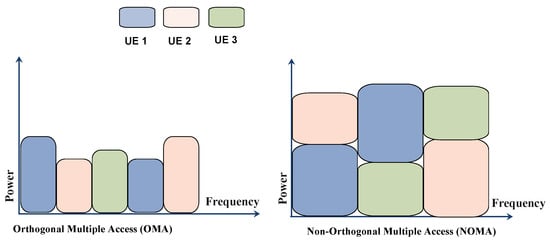
Figure 2. Pictorial representation of orthogonal and Non-Orthogonal Multiple Access (NOMA).
State-of-the-Art of Approaches
A plenty of approaches were developed to address the various issues in NOMA.
A novel approach to address the multiple receiving signals at the same frequency is proposed in [16]. In NOMA, multiple users use the same sub-carrier, which improves the fairness and throughput of the system. As a nonorthogonal method is used among multiple users, at the time of retrieving the user’s signal at the receiver’s end, joint processing is required.
Lots of analyses were held that described that NOMA effectively satisfies user data rate demands and network-level of 5G technologies. It showed the comparative analysis regarding allocation procedures, user fairness, state-of-the-art efficiency evaluation, user pairing pattern, etc. The study also analyzes NOMA’s behavior when working with other wireless communication techniques, namely, beamforming, MIMO, cooperative connections, network, space-time coding, etc.
This model increases the uplink NOMA by decreasing the user’s uplink energy consumption. They formulated an optimized NOMA framework that reduces the energy consumption of MEC by using computing and communication resource allocation, user clustering, and transmit powers.
The obtained simulation results showed NOMA’s efficiency, achieving higher performance fairness compared to the TDMA configurations. It was observed from the results that NOMA, through the appropriate power amplifiers (PA), ensures the high-performance fairness requirement for the future 5G wireless communication networks.
3. 5G Millimeter Wave (mmWave)
Millimeter wave is an extremely high frequency band, which is very useful for 5G wireless networks. MmWave uses 30 GHz to 300 GHz spectrum band for transmission. The frequency band between 30 GHz to 300 GHz is known as mmWave because these waves have wavelengths between 1 to 10 mm. Till now radar systems and satellites are only using mmWave as these are very fast frequency bands which provide very high speed wireless communication. Many mobile network providers also started mmWave for transmitting data between base stations. Using two ways the speed of data transmission can be improved one is by increasing spectrum utilization and second is by increasing spectrum bandwidth. Out of these two approaches increasing bandwidth is quite easy and better. The frequency band below 5 GHz is very crowded as many technologies are using it so to boost up the data transmission rate 5G wireless network uses mmWave technology which instead of increasing spectrum utilization, increases the spectrum bandwidth [17]. To maximize the signal bandwidth in wireless communication the carrier frequency should also be increased by 5% because the signal bandwidth is directly proportional to carrier frequencies. The frequency band between 28 GHz to 60 GHz is very useful for 5G wireless communication as 28 GHz frequency band offers up to 1 GHz spectrum bandwidth and 60 GHz frequency band offers 2 GHz spectrum bandwidth. 4G LTE provides 2 GHz carrier frequency which offers only 100 MHz spectrum bandwidth. However, the use of mmWave increases the spectrum bandwidth 10 times, which leads to better transmission speeds [18][19].
Highlights of 5G mmWave are as follows:
-
In the technological world, everyone uses WiMax, GPS, wifi, 4G, 3G, L-Band, S-Band, C- Band Satellite, etc., for communication. The radio frequency spectrum of these technologies is minimal, which lies between 1 GHz to 6 GHz. Hence, it is very crowded. The spectrum range from 30 GHz to 300 GHz, known as mmWave, is less utilized and still not allocated to other communication technologies. After a long time, the range from 24 GHz to 100 GHz is allocated to 5G. As shown in Figure 3.
-
The 5G mmWave offer three advantages: (1) MmWave is very less used new Band, (2) MmWave signals carry more data than lower frequency wave, and (3) MmWave can be incorporated with MIMO antenna with the potential to offer a higher magnitude capacity compared to current communication systems.
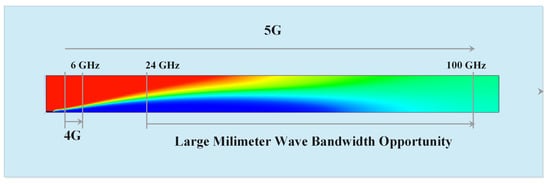
Figure 3. Pictorial representation of millimeter wave.
4. 5G IoT Based Approaches
The 5G mobile network plays a big role in developing the Internet of Things (IoT). IoT will connect lots of things with the internet like appliances, sensors, devices, objects, and applications. These applications will collect lots of data from different devices and sensors. 5G will provide very high speed internet connectivity for data collection, transmission, control, and processing. 5G is a flexible network with unused spectrum availability and it offers very low cost deployment that is why it is the most efficient technology for IoT [20]. In many areas, 5G provides benefits to IoT, and below are some examples:
Smart homes: smart home appliances and products are in demand these days. The 5G network makes smart homes more real as it offers high speed connectivity and monitoring of smart appliances. Smart home appliances are easily accessed and configured from remote locations using the 5G network, as it offers very high speed low latency communication.
Smart cities: 5G wireless network also helps in developing smart cities applications such as automatic traffic management, weather update, local area broadcasting, energy saving, efficient power supply, smart lighting system, water resource management, crowd management, emergency control, etc.
Industrial IoT: 5G wireless technology will provide lots of features for future industries such as safety, process tracking, smart packing, shipping, energy efficiency, automation of equipment, predictive maintenance and logistics. 5G smart sensor technology also offers smarter, safer, cost effective, and energy-saving industrial operation for industrial IoT.
Smart Farming: 5G technology will play a crucial role for agriculture and smart farming. 5G sensors and GPS technology will help farmers to track live attacks on crops and manage them quickly. These smart sensors can also be used for irrigation control, pest control, insect control, and electricity control.
Autonomous Driving: 5G wireless network offers very low latency high speed communication which is very significant for autonomous driving. It means self-driving cars will come to real life soon with 5G wireless networks. Using 5G autonomous cars can easily communicate with smart traffic signs, objects and other vehicles running on the road. 5G’s low latency feature makes self-driving more real as every millisecond is important for autonomous vehicles, decision taking is performed in microseconds to avoid accidents [21].
Highlights of 5G IoT are as follows:
-
IoT is termed as “Internet of Things.” It provides machine-to-machine (M2M) communication and shares information between heterogeneous devices without human interference. As shown in the Figure 4.
-
5G with IoT is a new feature of next-generation mobile communication, which provides a high-speed internet connection between moderated devices. 5G IoT also offers smart homes, smart devices, sensors, smart transportation systems, smart industries, etc., for end-users to make them smarter.
-
IoT deals with moderate devices which connect through the internet. The approach of the IoT has made the consideration of the research associated with the outcome of providing wearable, smart-phones, sensors, smart transportation systems, smart devices, washing machines, tablets, etc., and these diverse systems are associated to a common interface with the intelligence to connect.
-
Significant IoT applications include private healthcare systems, traffic management, industrial management, and tactile internet, etc.
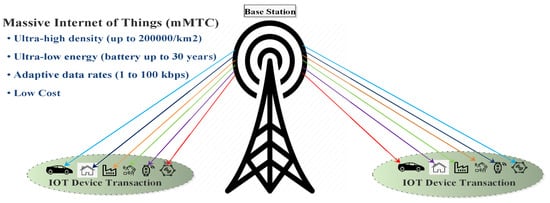
Figure 4. Pictorial representation of IoT with 5G.
5. Machine Learning Techniques for 5G
Various machine learning (ML) techniques were applied in 5G networks and mobile communication. It provides a solution to multiple complex problems, which requires a lot of hand-tuning. ML techniques can be broadly classified as supervised, unsupervised, and reinforcement learning. Let’s discuss each learning technique separately and where it impacts the 5G network.
Supervised Learning, where user works with labeled data; some 5G network problems can be further categorized as classification and regression problems. Some regression problems such as scheduling nodes in 5G and energy availability can be predicted using Linear Regression (LR) algorithm. To accurately predict the bandwidth and frequency allocation Statistical Logistic Regression (SLR) is applied. Some supervised classifiers are applied to predict the network demand and allocate network resources based on the connectivity performance; it signifies the topology setup and bit rates. Support Vector Machine (SVM) and NN-based approximation algorithms are used for channel learning based on observable channel state information. Deep Neural Network (DNN) is also employed to extract solutions for predicting beamforming vectors at the BS’s by taking mapping functions and uplink pilot signals into considerations.
In unsupervised Learning, where the user works with unlabeled data, various clustering techniques are applied to enhance network performance and connectivity without interruptions. K-means clustering reduces the data travel by storing data centers content into clusters. It optimizes the handover estimation based on mobility pattern and selection of relay nodes in the V2V network. Hierarchical clustering reduces network failure by detecting the intrusion in the mobile wireless network; unsupervised soft clustering helps in reducing latency by clustering fog nodes. The nonparametric Bayesian unsupervised learning technique reduces traffic in the network by actively serving the user’s requests and demands. Other unsupervised learning techniques such as Adversarial Auto Encoders (AAE) and Affinity Propagation Clustering techniques detect irregular behavior in the wireless spectrum and manage resources for ultradense small cells, respectively.
In case of an uncertain environment in the 5G wireless network, reinforcement learning (RL) techniques are employed to solve some problems. Actor-critic reinforcement learning is used for user scheduling and resource allocation in the network. Markov decision process (MDP) and Partially Observable MDP (POMDP) is used for Quality of Experience (QoE)-based handover decision-making for Hetnets. Controls packet call admission in HetNets and channel access process for secondary users in a Cognitive Radio Network (CRN). Deep RL is applied to decide the communication channel and mobility and speeds up the secondary user’s learning rate using an antijamming strategy. Deep RL is employed in various 5G network application parameters such as resource allocation and security [22].
Highlights of machine learning techniques for 5G are as follows:
-
Machine learning (ML) is a part of artificial intelligence. It processes and analyses the data that automates a systematic model that finds patterns and carries out decisions with minimum human interference. As shown in the Figure 5.
-
In ML, a model will be defined which fulfills the desired requirements through which desired results are obtained. In the later stage, it examines accuracy from obtained results.
-
ML plays a vital role in 5G network analysis for threat detection, network load prediction, final arrangement, and network formation. Searching for a better balance between power, length of antennas, area, and network thickness crossed with the spontaneous use of services in the universe of individual users and types of devices.
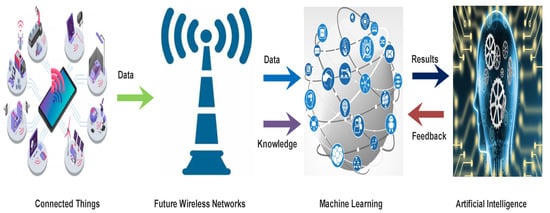
Figure 5. Pictorial representation of machine learning (ML) in 5G.
6. Optimization Techniques for 5G
Optimization techniques may be applied to capture NP-Complete or NP-Hard problems in 5G technology. This section briefly describes various research works suggested for 5G technology based on optimization techniques.
In [23], Massive MIMO technology is used in 5G mobile network to make it more flexible and scalable. The MIMO implementation in 5G needs a significant number of radio frequencies is required in the RF circuit that increases the cost and energy consumption of the 5G network.
In [24], investigators examined the working of OFDM in various channel environments. They also figured out the changes in frame duration of the 5G TDD frame design. Subcarrier spacing is beneficial to obtain a small frame length with control overhead. They provided various techniques to reduce the growing guard period (GP) and cyclic prefix (CP) like complete utilization of multiple subcarrier spacing, management and data parts of frame at receiver end, various uses of timing advance (TA) or total control of flexible CP size.
References
- Abdullah, M.; Altaf, A.; Anjum, M.R.; Arain, Z.A.; Jamali, A.A.; Alibakhshikenari, M.; Falcone, F.; Limiti, E. Future smartphone: MIMO antenna system for 5G mobile terminals. IEEE Access 2021, 9, 91593–91603.
- Larsson, E.G.; Van der Perre, L. Massive MIMO for 5G; IEEE: Piscataway, NJ, USA, 2017; Volume 1.
- Wang, C.X.; Wu, S.; Bai, L.; You, X.; Wang, J.; Chih-Lin, I. Recent advances and future challenges for massive MIMO channel measurements and models. Sci. China Inf. Sci. 2016, 59, 1–16.
- Chataut, R.; Akl, R. Massive MIMO systems for 5G and beyond networks—Overview, recent trends, challenges, and future research direction. Sensors 2020, 20, 2753.
- Mae, M.; Ohnishi, W.; Fujimoto, H. MIMO multirate feedforward controller design with selection of input multiplicities and intersample behavior analysis. Mechatronics 2020, 71, 102442.
- Panzner, B.; Zirwas, W.; Dierks, S.; Lauridsen, M.; Mogensen, P.; Pajukoski, K.; Miao, D. Deployment and implementation strategies for massive MIMO in 5G. In Proceedings of the IEEE Globecom Workshops (GC Wkshps), Austin, TX, USA, 8–12 December 2014; Volume 59, pp. 346–351.
- He, C.; Gitlin, R.D. System performance of cooperative massive MIMO downlink 5G cellular systems. In Proceedings of the IEEE 17th Annual Wireless and Microwave Technology Conference (WAMICON), Clearwater, FL, USA, 11–13 April 2016; pp. 1–5.
- Prasad, K.S.V.; Hossain, E.; Bhargava, V.K. Energy efficiency in massive MIMO-based 5G networks: Opportunities and challenges. IEEE Wirel. Commun. 2017, 24, 86–94.
- Sheikh, T.A.; Bora, J.; Hussain, A. A survey of antenna and user scheduling techniques for massive MIMO-5G wireless system. In Proceedings of the International Conference on Current Trends in Computer, Electrical, Electronics and Communication (CTCEEC), Mysore, India, 8–9 September 2017; pp. 578–583.
- Ramesh, M.; Priya, C.G.; Ananthakirupa, V.A.A. Design of efficient massive MIMO for 5G systems—Present and past: A review. In Proceedings of the International Conference on Intelligent Computing and Control (I2C2), Coimbatore, India, 23–24 June 2017; pp. 1–4.
- Zhou, Y.; Li, D.; Wang, H.; Yang, A.; Guo, S. QoS-aware energy-efficient optimization for massive MIMO systems in 5G. In Proceedings of the Sixth International Conference on Wireless Communications and Signal Processing (WCSP), Hefei, China, 23–25 October 2014; pp. 1–5.
- Shental, O.; Zaidel, B.M.; Shitz, S.S. Low-density code-domain NOMA: Better be regular. In Proceedings of the 2017 IEEE International Symposium on Information Theory (ISIT), Aachen, Germany, 25–30 June 2017; pp. 2628–2632.
- Islam, S.R.; Avazov, N.; Dobre, O.A.; Kwak, K.S. Power-domain non-orthogonal multiple access (NOMA) in 5G systems: Potentials and challenges. IEEE Commun. Surv. Tutor. 2016, 19, 721–742.
- Wu, Z.; Lu, K.; Jiang, C.; Shao, X. Comprehensive study and comparison on 5G NOMA schemes. IEEE Access 2018, 6, 18511–18519.
- Deka, K.; Sharma, S. Hybrid NOMA for Future Radio Access: Design, Potentials and Limitations. arXiv 2020, arXiv:2012.08106.
- Al-Imari, M.; Xiao, P.; Imran, M.A. Receiver and resource allocation optimization for uplink NOMA in 5G wireless networks. In Proceedings of the International Symposium on Wireless Communication Systems (ISWCS), Brussels, Belgium, 25–28 August 2015; pp. 151–155.
- Hong, T.; Zheng, S.; Liu, R.; Zhao, W. Design of mmWave Directional Antenna for Enhanced 5G Broadcasting Coverage. Sensors 2021, 21, 746.
- Pi, Z.; Khan, F. An introduction to millimeter-wave mobile broadband systems. IEEE Commun. Mag. 2011, 49, 101–107.
- Busari, S.A.; Mumtaz, S.; Al-Rubaye, S.; Rodriguez, J. 5G millimeter-wave mobile broadband: Performance and challenges. IEEE Commun. Mag. 2018, 56, 137–143.
- Goudos, S.K.; Dallas, P.I.; Chatziefthymiou, S.; Kyriazakos, S. A survey of IoT key enabling and future technologies: 5G, mobile IoT, sematic web and applications. Wirel. Pers. Commun. 2017, 97, 1645–1675.
- Slalmi, A.; Chaibi, H.; Saadane, R.; Chehri, A.; Jeon, G. 5G NB-IoT: Efficient network call admission control in cellular networks. Concurr. Comput. Pract. Exp. 2021, 33, e6047.
- Kaur, J.; Khan, M.A.; Iftikhar, M.; Imran, M.; Haq, Q.E.U. Machine learning techniques for 5g and beyond. IEEE Access 2021, 9, 23472–23488.
- Zi, R.; Ge, X.; Thompson, J.; Wang, C.X.; Wang, H.; Han, T. Energy efficiency optimization of 5G radio frequency chain systems. IEEE Wirel. Commun. 2016, 34, 758–771.
- Lähetkangas, E.; Pajukoski, K.; Vihriälä, J.; Berardinelli, G.; Lauridsen, M.; Tiirola, E.; Mogensen, P. Achieving low latency and energy consumption by 5G TDD mode optimization. In Proceedings of the IEEE International Conference on Communications Workshops (ICC), Sydney, NSW, Australia, 10–14 June 2014; pp. 1–6.
More
Information
Subjects:
Computer Science, Information Systems
Contributor
MDPI registered users' name will be linked to their SciProfiles pages. To register with us, please refer to https://encyclopedia.pub/register
:
View Times:
2.3K
Revisions:
2 times
(View History)
Update Date:
16 Feb 2022
Notice
You are not a member of the advisory board for this topic. If you want to update advisory board member profile, please contact office@encyclopedia.pub.
OK
Confirm
Only members of the Encyclopedia advisory board for this topic are allowed to note entries. Would you like to become an advisory board member of the Encyclopedia?
Yes
No
${ textCharacter }/${ maxCharacter }
Submit
Cancel
Back
Comments
${ item }
|
More
No more~
There is no comment~
${ textCharacter }/${ maxCharacter }
Submit
Cancel
${ selectedItem.replyTextCharacter }/${ selectedItem.replyMaxCharacter }
Submit
Cancel
Confirm
Are you sure to Delete?
Yes
No




